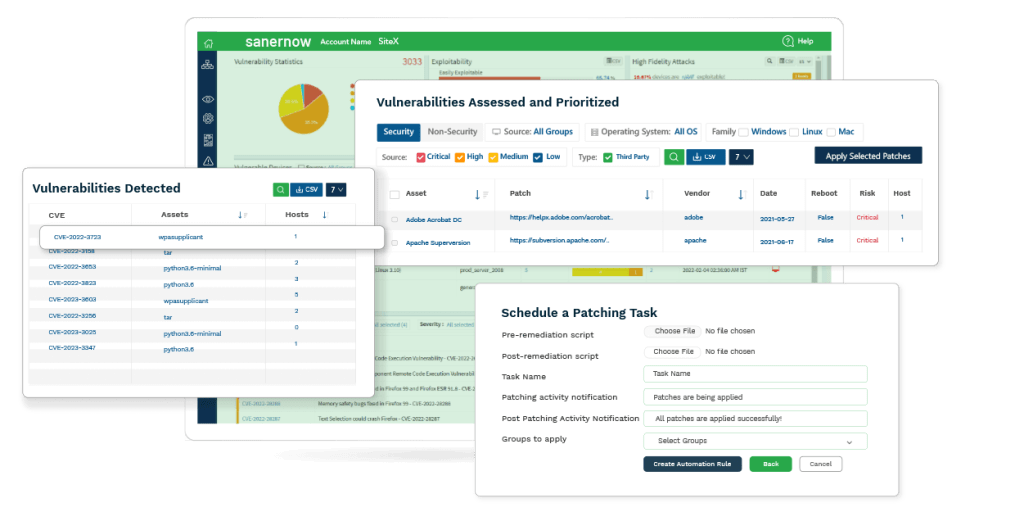In July 2021, Kaseya, a software company, experience a cyberattack that affected up to 1,500 businesses worldwide. This ransomware attack disrupted operations, caused financial losses, and highlighted the critical importance of cyber risk exposure. But what exactly is cyber risk exposure, and why should organizations care about it?
Cyber risk exposure refers to the potential loss or harm related to technical infrastructure, the use of technology, or reputation due to cyber threats. As businesses become increasingly digital, understanding and mitigating cyber risk exposure becomes essential. Enterprises face loads of cyber threats that lead to operational and financial losses. By comprehensively managing these risks, companies will be able to protect their IT assets and most importantly, maintain trust with customers and stakeholders.
Understanding Cyber Risk Exposure
There are various types of cyber risks, each posing unique threats to enterprises. The most common ones are:
- Ransomware
Ransomware is a type of malicious software that encrypts victim’s files. The attacker then demands a ransom to restore access to the data. This form of cyberattack paralyzes business operations, leading to substantial financial losses. The Kaseya attack is a prime example of ransomware’s impact. - Phishing
Phishing involves tricking individuals into providing sensitive information such as usernames, passwords, or credit card details by pretending to be a trustworthy entity. These attacks happen through emails, which leads to unauthorized access to systems and data breaches. - Data breaches
A data breach occurs when unauthorized individuals gain access to sensitive, protected or confidential data. Also, data breaches lead to the exposure of personal information, financial loss, and damage to an organization’s reputation. High-profile breaches, such as the Yahoo breach in 2013, have shown how damaging these incidents are.
Cyber attackers often target a wide range of individuals and entities. Common targets include:
- Businesses: Small, medium, and large enterprises are attractive targets due to the valuable data they hold, such as financial information and customer data.
- Government Agencies: These entities are targeted for sensitive information, such as classified data and citizen information.
- Individuals: Ordinary people can also be targets for identity theft, financial fraud, and personal data breaches.
Understanding these targets helps enterprises develop more effective strategies to protect their assets and information.
What is Cyber Risk Exposure Management?
Cyber risk exposure management involves identifying, assessing, and mitigating risks associated with cyber threats. It is a continuous process that helps enterprises reduce their attack surface. Effective management includes implementing security measures, developing responsive plans, and regularly reviewing and updating policies to address emerging threats.
Steps to Manage Cyber Risk Exposure using SanerNow
SanerNow Continuous Vulnerability & Exposure Management solution does everything you need to protect your IT infrastructure. Right from detection to remediation, SanerNow is your savior. Here is how SanerNow helps:
- SanerNow helps discover all IT assets including hardware, software, and network components. It is crucial to understand what needs protection. It helps you manage vulnerabilities, exposures and other security risks through a single unified dashboard.
- The vulnerabilities are prioritized into Act, Attend, Track and Track* by using CISA’s SSVC based risk prioritization. The values of exploitability, automatability, technical impact, and mission prevalence help reach a decision and prioritize whether the risks should be acted quickly.
- Once the vulns are prioritized, the number of vulnerability count comes down as you focus only on the most critical once. Patch these vulnerabilities with a single click using patch management. Patching these reduces the risk of exploitation through known vulnerabilities.
- Monitor and get real-time insights and alerts on suspicious activities. It enables you to quickly respond to incidents, minimizing potential threat and damage. Get new vulnerability coverage in 24-48 hours.
- SanerNow also helps you to comply with regulatory requirements by providing actionable audit reports and compliance checks. This ensures that businesses meet industry standards and legal obligations.

Conclusion
Cyber risk exposure is a significant concern for enterprises of all sizes. Understanding the types of cyber risks and implementing effective vulnerability management strategies is crucial for protecting assets, maintaining operations, and safeguarding reputation. SanerNow provides comprehensive solutions to identify, assess, and mitigate vulns, ensuring that enterprises navigate the complex cybersecurity landscape with confidence.


